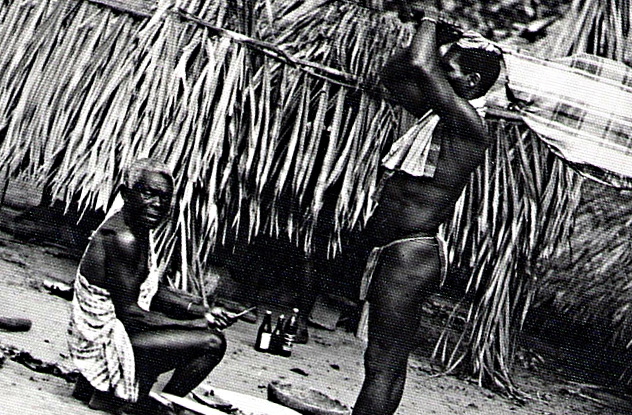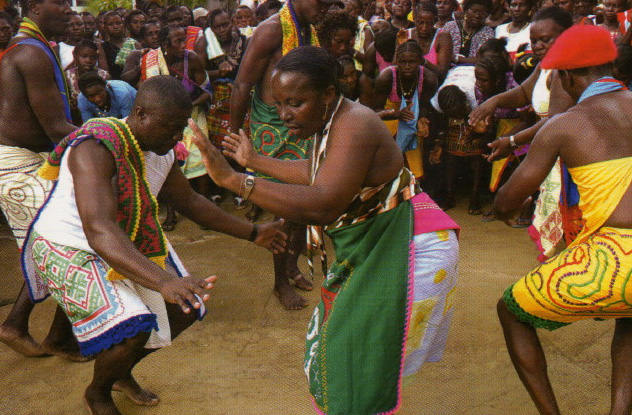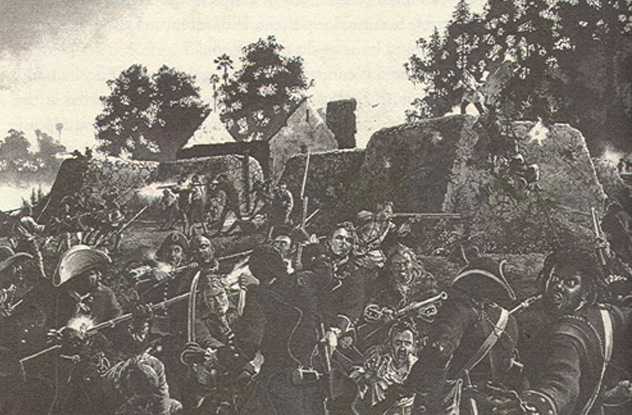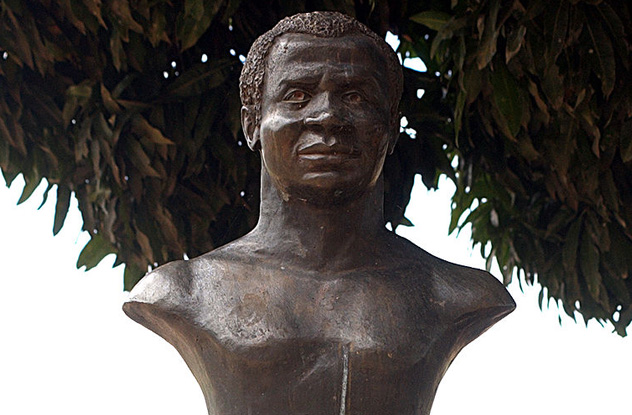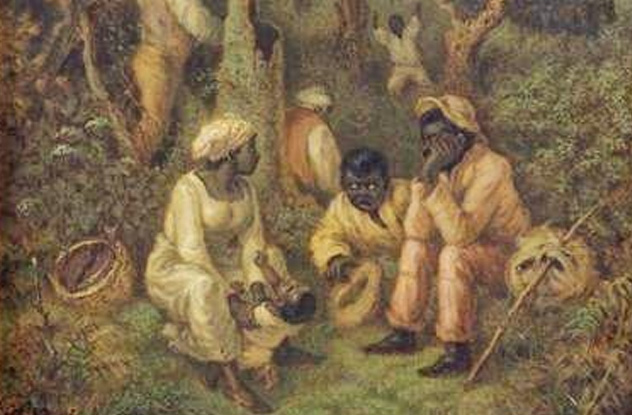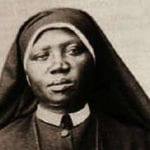10Cimarrones, Panama
The presence of Cimarrones in the Panamanian isthmus was first recorded in the 1520s, when slaves slipped away from convoys traveling between ports on the Pacific and Atlantic coasts. In the 1550s, a ship carrying a Mandinko slave named Bayano was wrecked off the coast, and Bayano was then elected “King of the Blacks.” He spent the next five years harrying the Spaniards by preying on mule convoys carrying gold and silver. The Spanish eventually realized they couldn’t defeat the Cimarrones on their own terrain and instead settled on treachery. At a supposed peace negotiation, they poisoned several of Bayano’s followers. The king himself was exiled to Peru and later Spain. Shortly thereafter, in 1572, the Cimarrones proved crucial allies in the privateering ventures of Sir Francis Drake. A group of 30 maroons guided Drake’s forces through the jungle, enabling him to ambush multiple mule trains, making off with much booty. The unnerved Spanish consequently launched several expeditions against the Cimarron settlements before coming to an agreement whereby the Cimarrones received a blanket pardon and their own self-governing settlement. In return, they were compelled to send back any future fugitive slaves and couldn’t ally with foreign powers.
9Siddis Of India
While the history of East African slaves in India may go back to 628, they first arrived in large numbers in the 12th century. They were employed mainly in military roles, and in the 15th century, an Abyssinian briefly reigned as a sultan in Bengal. Malik Ambar was later a respected prime minister and mercenary general in the late 16th and early 17th centuries. One particular group of Abyssinian Siddis came into control of Janjira in the 1490s, either seizing it in their own right or being appointed governors by a local ruler. Supposedly, they Trojan-horsed their way in, with their leader disguising himself as a merchant and then smuggling soldiers into the fortress in boxes. They quickly became the chief naval power on the northwest Indian coast, enriching themselves as mercenaries and pirates and through transporting hajj pilgrims. Over the following two centuries, they operated in a loose alliance with the Mughals and fended off Portuguese, Dutch, English, and Maratha attacks before finally being defeated by the British in 1760 and accepting British suzerainty in the 19th century.
8Black Cherokee
Actually, there are no black Cherokee. This is the opinion of the Cherokee themselves; they implemented a requirement of proven descent from a “Cherokee by blood” to claim citizenship and suffrage in 1983, but this was ruled unconstitutional by the nation’s Supreme Court in 2006. Unperturbed, they simply amended the constitution via a referendum. This amendment was upheld by the Supreme Court and expelled 3,000 freedmen. These are the descendants of the Cherokee slaves integrated into the tribe by law at the conclusion of the American Civil War, and the decision cuts them off from food aid and medical services. Early in their history the Cherokee were known to accept escaped slaves into their tribe. But contact with the United States (particularly the Southern United States) and the Cherokee’s subsequent assimilation saw them adopt white racial prejudices. The richer Cherokee also employed African slaves and sided with the Confederacy—Cherokee Brigadier-General Stand Watie was among the last Confederate officers to surrender. The Cherokee Freedmen Controversy, as it has come to be known, is a fascinating issue that blends questions of tribal sovereignty, civil rights, the distribution of federal aid, voter turnout (only 8,700 of 35,000 eligible voters took part in the referendum), and the desire to paint over a slave-owning past. The timing of the decision, just before a narrowly decided election for principal chief, also raises eyebrows.
7Bushinengues, Suriname, And French Guiana
In Suriname, the sugar plantations were overwhelmingly situated on rivers, with slaves easily able to flee into the surrounding forest and swamp. Over time, they organized themselves into tribes who regularly raided plantations in search of weapons, ammunition, women, and food, with such success that most signed treaties with the Dutch by the 1760s. That decade also saw the rise of the belligerent Boni maroons, who carried out a concerted guerrilla war for 30 years. The Boni ultimately migrated into French Guiana and only signed a treaty with the Europeans in the 1860s, after a century of intermittent warfare. Back in Suriname, the maroon population grew substantially, and the six tribes today make up 10 percent of the country’s population. In doing so, they have often resisted the modernization and resettlement attempts of the central government and military, culminating in a six-year guerrilla war from 1986–1992. More recent years have seen them try to assert their land rights in the face of mining and hydroelectric projects.
6Jamaican Maroons
The Jamaican Maroons have their genesis in the Spanish abandonment of the island in 1655, wherein many slaves fled into the mountainous interior as the British occupied Jamaica. Here, they coalesced into two groups, the Leeward (in the west) and Windward (in the east) tribes. Over the following several decades, relations with the British remained tense. The British resented the harboring of runaways and undermining of their authority. Regular slave rebellions further destabilized the situation, as did the growth of the Maroon population and consequent demand for land. This boiled over into open conflict in the 1720s, but the Maroons proved skilled in guerrilla warfare, using the terrain to their advantage. In 1739, they came to a negotiated peace with the British. This stipulated that the Maroons would capture and return runaways and defend Jamaica against foreign invasion. In return, their freedom and land rights were recognized, and they were allowed to govern themselves. Peace was maintained until 1795. Spooked by the slave revolt in Haiti, the belligerent British governor elected to punish one maroon group, Trelawney Town, for minor infractions. Though no other maroon communities came to their aid, Trelawney’s 300 maroons (and a few hundred runaways) held out against 10-to-1 odds for eight months. When finally defeated by sheer weight of numbers and an intensive fort-building program (plus, the British brought in hunting dogs), some 500 maroons were deported to Nova Scotia. Unused to the climate and farming conditions, they quickly grew restless and were sent to newly established Sierra Leone.
5Fort Mose, Florida
In 1693, King Charles II of Spain (otherwise known for being ridiculously inbred), issued an edict granting freedom to fugitive slaves seeking refuge in St. Augustine, the capital of Spanish Florida. This weakened their English rivals (the runaways came from the Carolinas) and strengthened themselves by marshalling the ex-slaves’ support and military power. The importance of defending sparsely populated Florida is reflected in the preconditions a fugitive had to accept: to protect St. Augustine, swear loyalty to Spain, and convert to Catholicism. The British grew increasingly incensed, sending agents to demand the return of their property and initiating a series of raids and counter-raids. This occurred especially during Queen Anne’s War (1702–1713), the American theater of the War of the Spanish Succession. When these proved insufficient, Georgia was established to serve as a slave-free buffer state. In 1738, the increasingly assertive freedmen were given their own autonomous settlement at Fort Mose, the first of its kind. Its population soon numbered 100. The following year, hostilities with England resumed in the War of Jenkin’s Ear, and the English, after suppressing a rebellion of their own slaves, attacked Florida. As a result, the freedmen were forced to withdraw from Fort Mose to play a pivotal role in defending St. Augustine, serving under black officers and receiving pay equal to their Spanish comrades. Fort Mose was then retaken in a devastating surprise attack that forced the British invaders to withdraw. In the long run, however, the British attained Florida in 1763 at the conclusion of the French and Indian (or Seven Years’) War. The freed black community evacuated to Cuba.
4Palmares, Brazil
Palmares was founded in 1605, allegedly by an Angolan princess who escaped slavery. It came to consist of 10 large settlements and up to 30,000 people. This number is roughly equal to the population of British North America at the same time and was ruled over by a “great lord” or king, governed according to a mishmash of central African customs. By the 1630s, the ruler was Ganga Zumba, and Palmares continued to flourish in the face of Portuguese and Dutch pressure. An eyewitness to a Dutch expedition in 1645 described the towns of New and Old Palmares as being surrounded by stakes and gates sealed by fallen trees. It had a range of buildings including churches, smithies, and fountains. The constant strife, however, took its toll on Ganga Zumba. In 1678, he agreed to a treaty with the Portuguese, obliging him to stop accepting fugitive slaves and acknowledge Portuguese suzerainty. This compromise was rejected by Ganga Zumba’s military commander or nephew Zumbi, who chose resistance. Zumba died, possibly of poison, shortly thereafter. Zumbi then managed to fend off six consecutive Portuguese attacks from 1680–1686 before Palmares finally fell in 1694 and was destroyed in its entirety. Despite the defeat of Palmares, maroon communities known as quilombos remained widespread in Brazil. Some 700 are identified today. Since the 1980s, they’ve been steadily working to attain legal title to their lands.
3Great Dismal Swamp Maroons
The charmingly named Great Dismal Swamp of southeastern Virginia and northeastern North Carolina consisted of 3,200 kilometers (2,000 mi) of tangling vegetation over marshy ground with an array of bears, snakes, and wildcats. Its apparently inhospitable nature meant it was largely left alone by early European settlers and served as a haven for escaped slaves from the late 1600s through to the Civil War. Having established themselves on small patches of higher ground in the swamp’s interior, the maroon population soon grew to anywhere between a few hundred and 2,000. However, by the latter decades of the 18th century, the tides of economic progress affected even the isolated and foreboding Great Dismal Swamp in the form of roads, timber companies, and a canal. Perhaps surprisingly, the maroons were partially integrated into this wider economy and found work on lumber operations, construction gangs, and as mule-drivers. In doing so, they worked alongside slaves, some of whom stayed in the swamp after purchasing their freedom. In the Civil War, the two sides competed for control of the Great Dismal Canal, which was eventually secured by the Union with help from black troops. Later campaigns in the area saw the maroons provide provisions and scouts for the Union troops and launched guerrilla campaigns into North Carolina. Following emancipation and the close of the war, the swamp was largely abandoned.
2Miskito Sambu, Nicaragua
In either 1641 or 1652, a Portuguese slave ship sank off the Mosquito Coast in Central America, but a sizeable number made it ashore. Here, they were integrated into the local Miskito, forming their own distinct ethnic sub-group. The Miskito Sambu (or Zambos), and eventually rose to command the tribe and the coast. They also struck up an enduring connection with England, partly because a Miskito chief had sent his son, Oldman, to visit England during the reign of King Charles. They adopted the institution of monarchy and were ruled over by a series of kings with firmly British names, like Peter, Edward, Robert, George, Andrew, and even a Prince Wellington. The first of these, King Jeremy (first attested in the last decade of the 17th century) was at least part African, and so were his successors. The affinity with Britain was confirmed by an official treaty of friendship and alliance in 1740 as well as the British establishment of a protectorate over the coast. It was in this guise that the Miskito harried Spanish territory with some success during the American Revolutionary War, but Britain’s ultimate defeat compelled them to withdraw from the protectorate in 1787. Following the independence of Spain’s colonies, both Honduras and Nicaragua asserted loose control over the Miskito, and Nicaragua annexed the place outright in 1894. The Miskito, many of whom are English-speaking and Protestant, have sometimes had troublesome relations with their new governments, and fought against the Sandinista government in the 1980s. In doing so, they teamed up with the Contras, who are famous for receiving illegal funding from Ronald Reagan.
1Black Seminoles
As we have seen, Florida was an attractive destination for many runaway slaves, but not all settled under Spanish authority. Instead, some established their own communities among the Seminole. Here, they lived in their own towns but gave the Seminole an annual tribute and served as translators in negotiations with Europeans. Eventually, however, tensions with America over runaway slaves resulted in open conflict. Future president Andrew Jackson invaded in the First Seminole War (1817–1818), and Spain ceded Florida to the United States. This also saw a small group of black Seminoles flee the area to settle on Andros Island in the Bahamas, where their community endures to this day. Despite their initial victory, the Americans remained covetous of Seminole land, and their demand that the Seminole move west of the Mississippi River triggered the Second Seminole War (1835–1842). The maroons were a key factor in the dogged resistance encountered by the US Army, stirring up one of the largest slave revolts in US history. Nevertheless, the Americans emerged victorious (though it cost the lives of 2,000 soldiers and up to $60 million), partly by exacerbating divisions between the black and Indian Seminole. Most were deported to Indian Territory. Dissatisfaction with conditions here led several hundred black Seminoles to take up a Mexican offer to serve as border guards in 1849. Most of these were enticed back in 1870 to serve as Indian Scouts for the US Army, setting up a unit that would last until 1912 and win four Medals of Honor. However, the US government reneged on a promise to give them land, mainly due to disputes over whether black Seminoles were entitled to Indian land. Some returned to Mexico as squatters, and others re-joined their compatriots in the Indian Territory, which became Oklahoma. Finally, following the disbandment of the Scouts in 1912, the 200–300 remaining black Seminoles settled in Brackettville, Texas next to the fort they’d been stationed in. Unfortunately, as with the Cherokee, the black Seminoles have subsequently faced questions over their right to claim Seminole citizenship and the benefits it entitles and have been involved in bitter legal disputes. Tyler Parsons is a socially maladjusted degenerate loafer struggling with the lack of meaning (or even noticeable emotion) in his life. Email him or look him up on Facebook.



